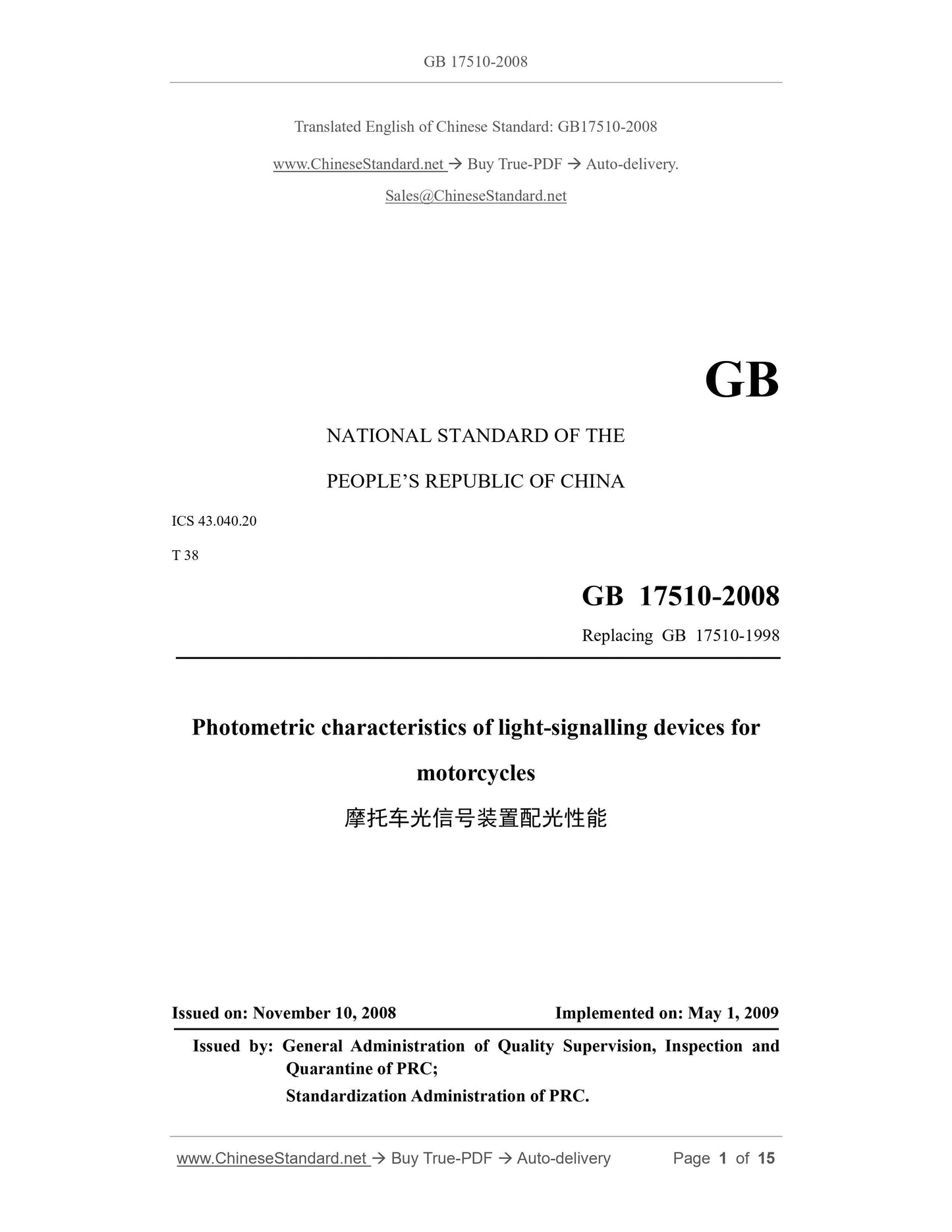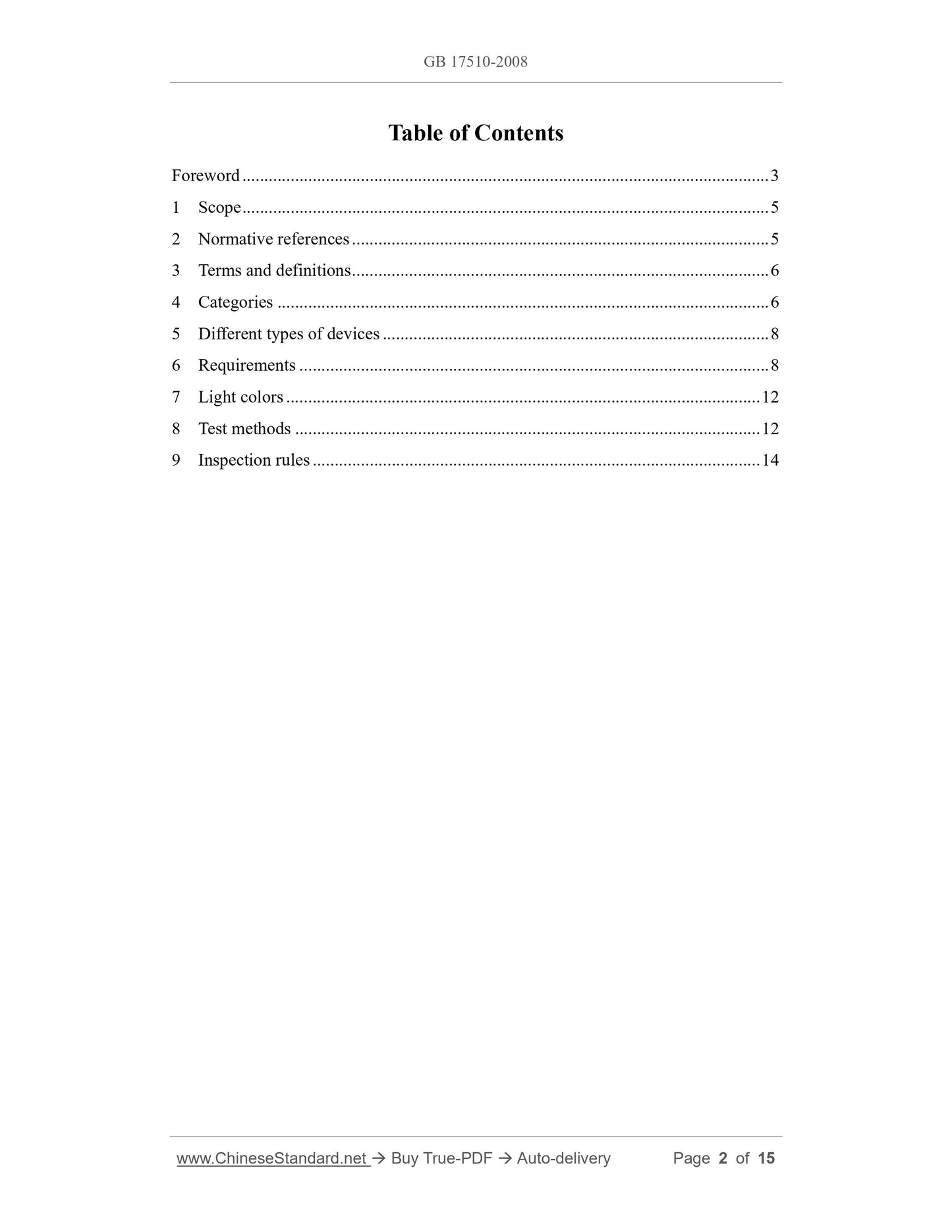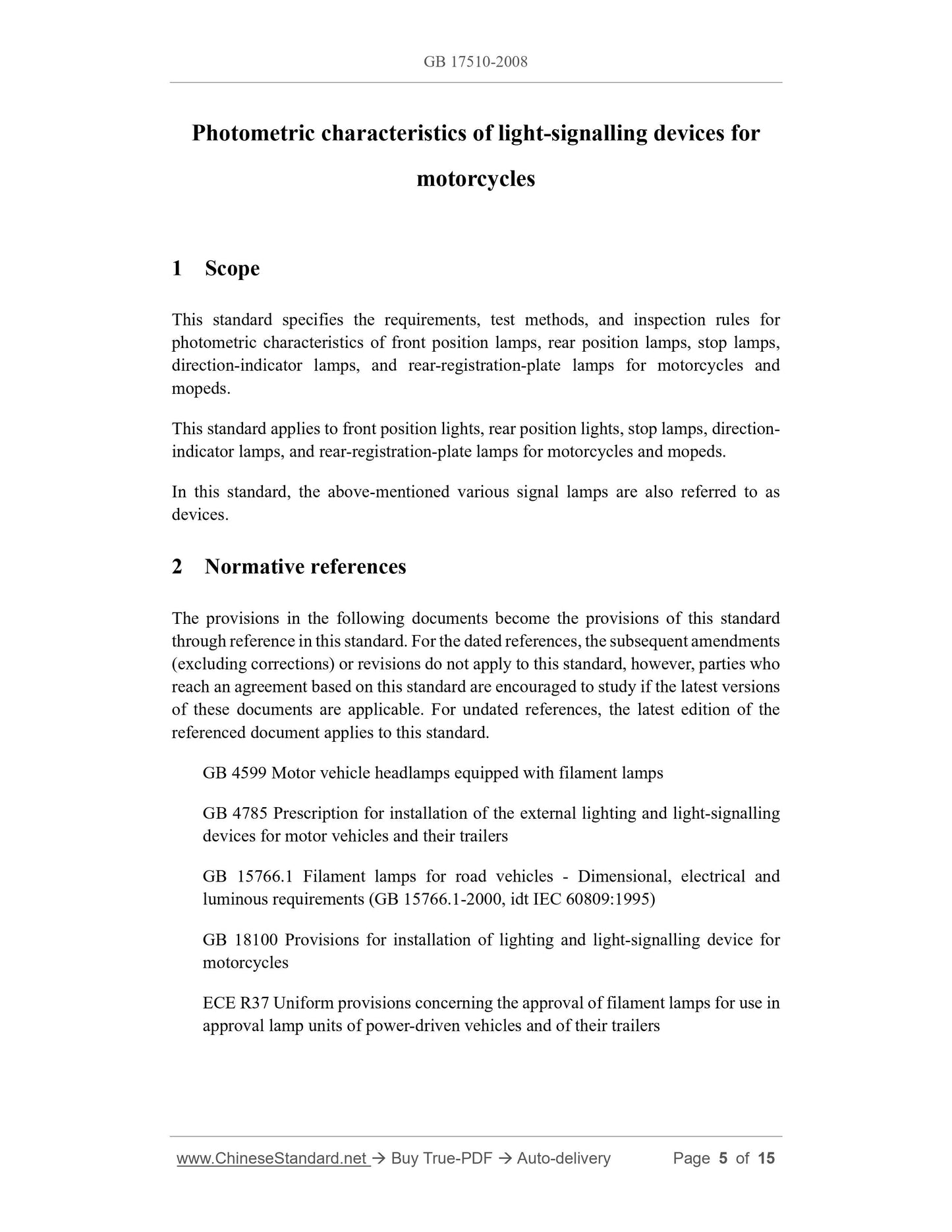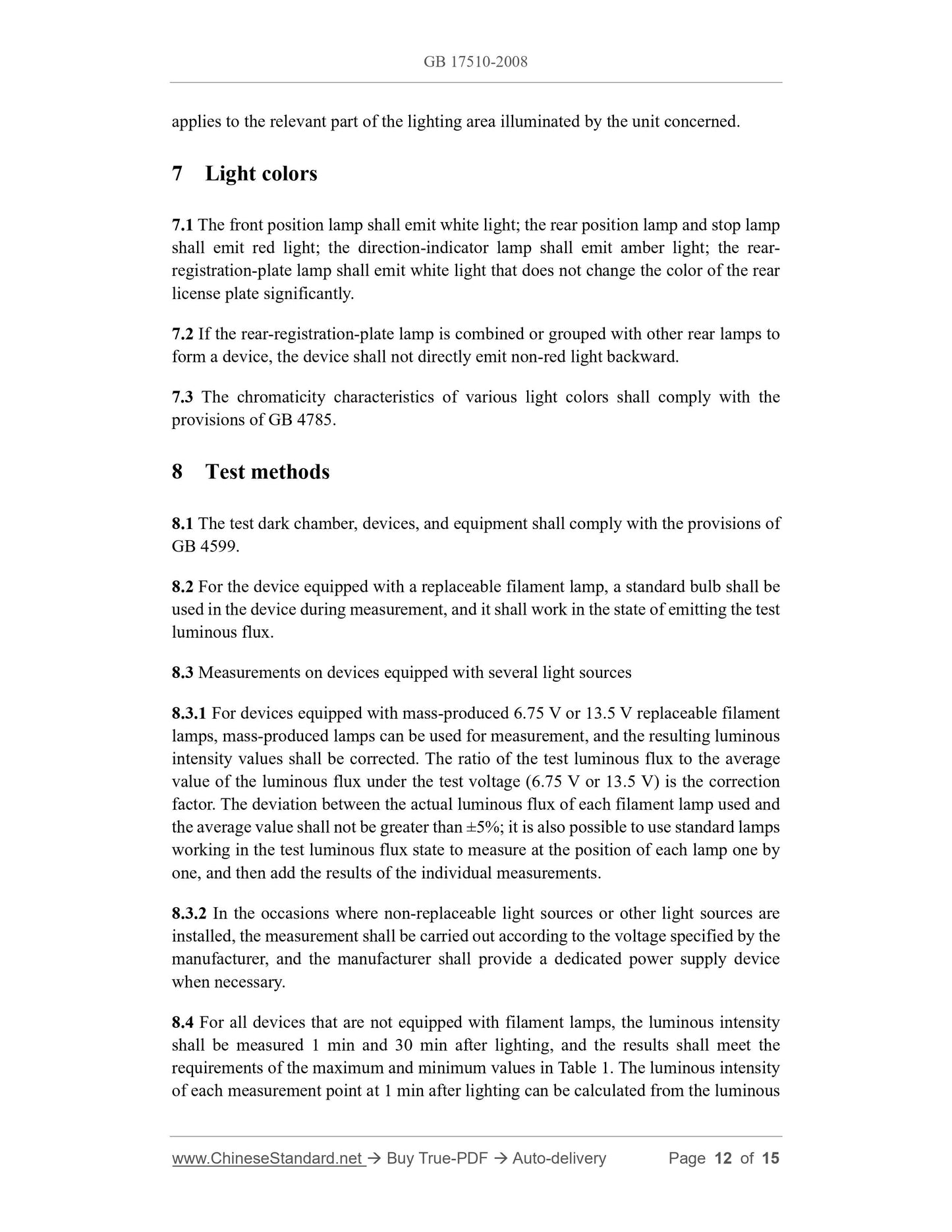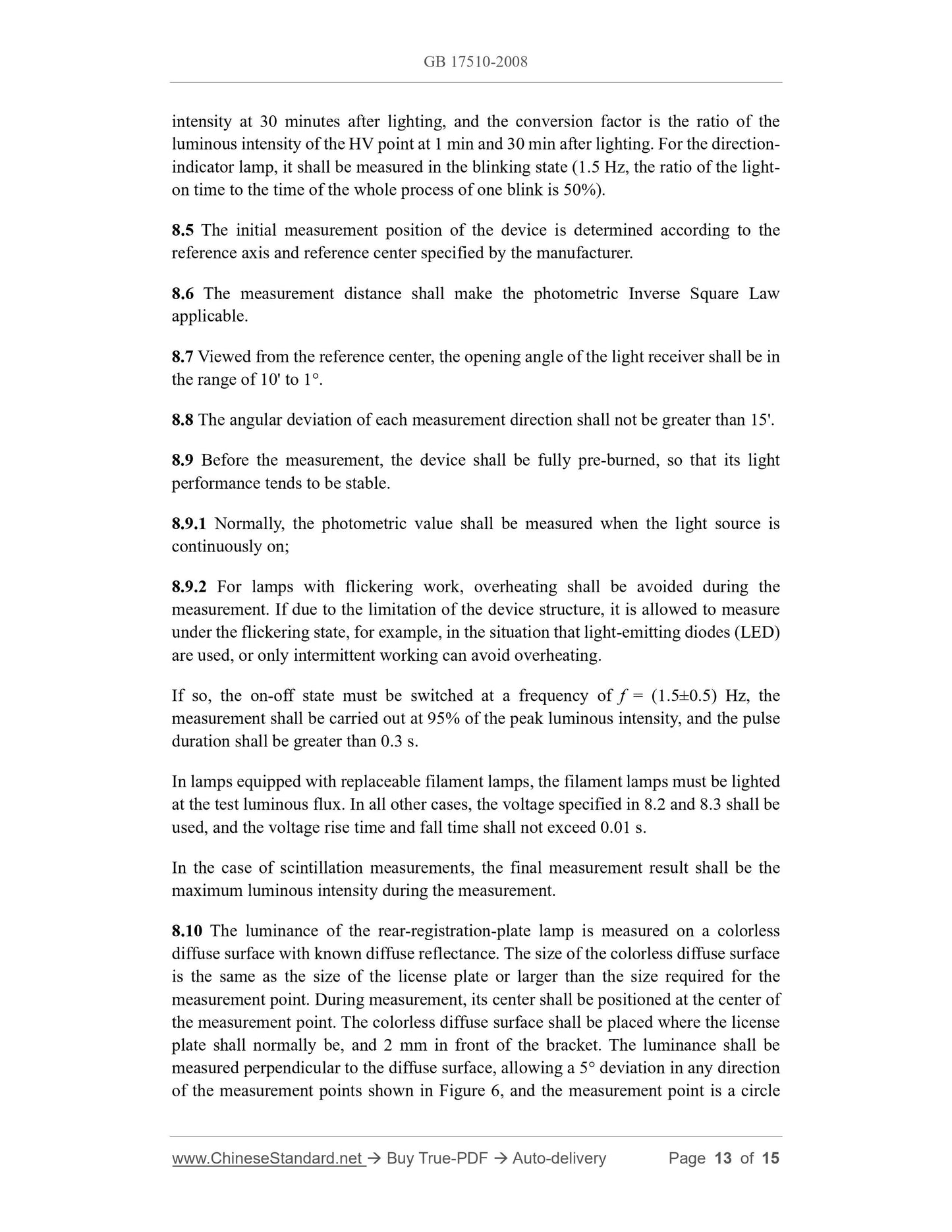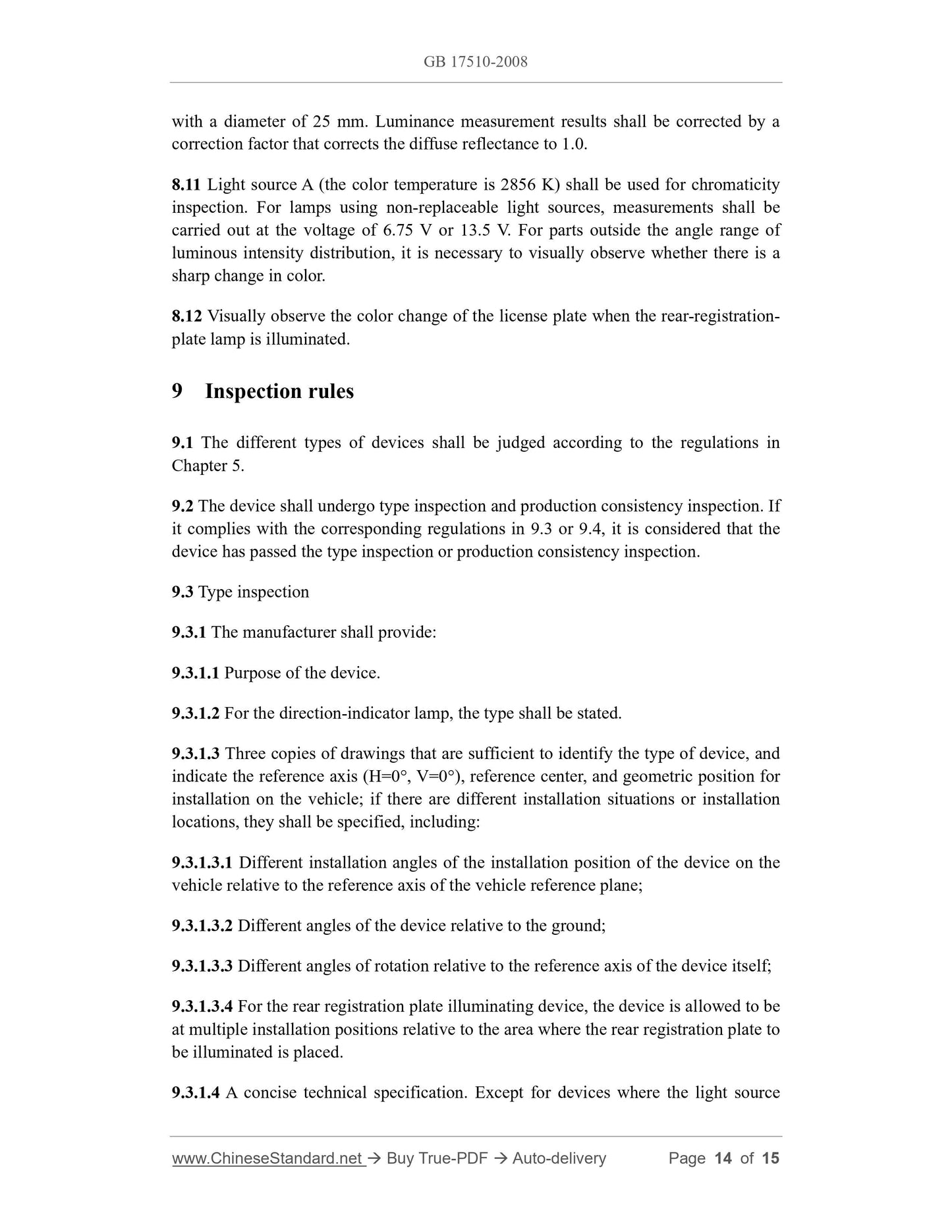1
/
of
7
www.ChineseStandard.us -- Field Test Asia Pte. Ltd.
GB 17510-2008 English PDF
GB 17510-2008 English PDF
Regular price
$105.00
Regular price
Sale price
$105.00
Unit price
/
per
Shipping calculated at checkout.
Couldn't load pickup availability
GB 17510-2008: Photometric characteristics of light-signalling devices for motorcycles
Delivery: 9 seconds. Download (and Email) true-PDF + Invoice.Get Quotation: Click GB 17510-2008 (Self-service in 1-minute)
Newer / historical versions: GB 17510-2008
Preview True-PDF
Scope
This standard specifies the requirements, test methods, and inspection rules forphotometric characteristics of front position lamps, rear position lamps, stop lamps,
direction-indicator lamps, and rear-registration-plate lamps for motorcycles and
mopeds.
This standard applies to front position lights, rear position lights, stop lamps, direction-
indicator lamps, and rear-registration-plate lamps for motorcycles and mopeds.
In this standard, the above-mentioned various signal lamps are also referred to as
devices.
Basic Data
| Standard ID | GB 17510-2008 (GB17510-2008) |
| Description (Translated English) | Photometric characteristics of light-signalling devices for motorcycles |
| Sector / Industry | National Standard |
| Classification of Chinese Standard | T38 |
| Classification of International Standard | 43.040.20 |
| Word Count Estimation | 9,982 |
| Date of Issue | 2008-11-10 |
| Date of Implementation | 2009-05-01 |
| Older Standard (superseded by this standard) | GB 17510-1998 |
| Quoted Standard | GB 4599; GB 4785; GB 15766.1; GB 18100; ECE R37 |
| Adopted Standard | ECE R50-2004, NEQ |
| Regulation (derived from) | Announcement of Newly Approved National Standards No. 18 of 2008 (No. 131 overall) |
| Issuing agency(ies) | General Administration of Quality Supervision, Inspection and Quarantine of the People's Republic of China, Standardization Administration of the People's Republic of China |
| Summary | This Chinese standard specifies the use of motorcycles and mopeds front position lamps, rear position lamps, stop lamps, turn signal lamps and rear registration plate lamps for photometric performance requirements, test methods and inspection rules. This standard applies to motorcycles and mopeds with a front position lamps, rear position lamps, stop lamps, turn signal lamps and rear license plate lights. In this standard, the variety of lights also known devices. |
Share
